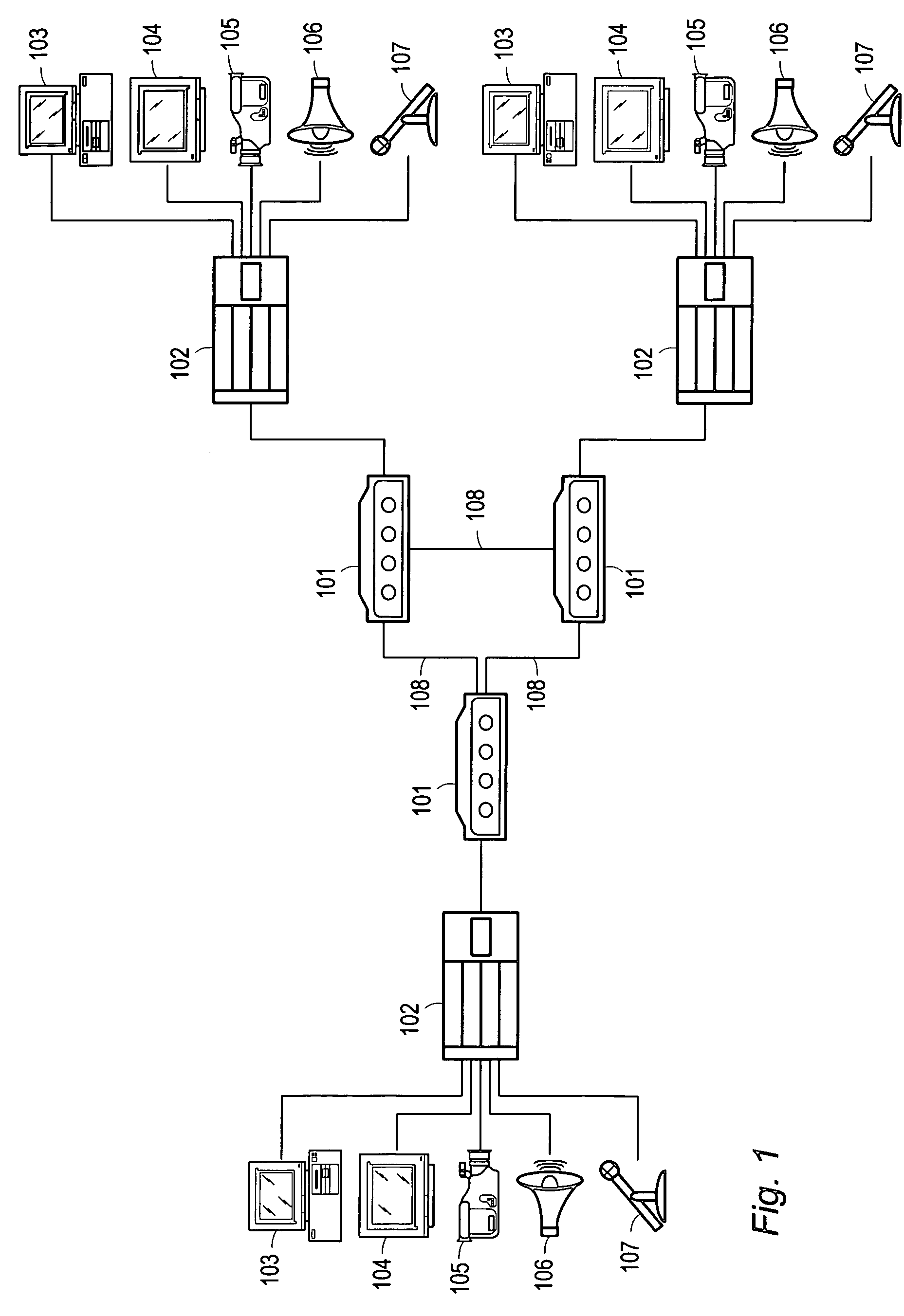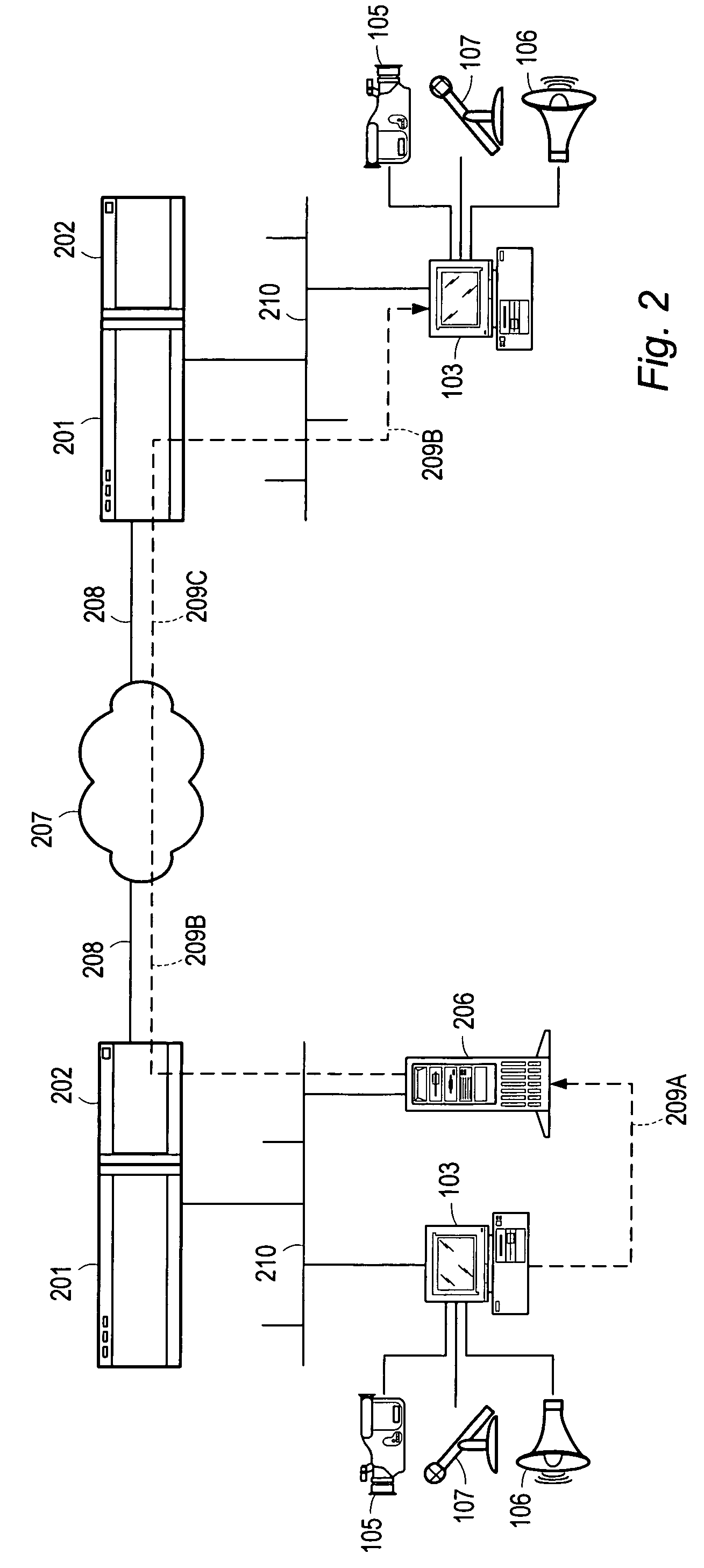The systems employed transport mechanisms that while robust, were expensive to install, maintain and operate.
Dedicated and / or switched lines (ISDN, T-1, T-3, ATM) or satellite broadband circuits employed for these conferencing systems were under-utilized and failed to provide recognizable returns on their recurring cost.
Legacy conferencing hardware and infrastructure provided high quality audio and video but lacked features and functionality to facilitate true collaborative environments.
Further, the installation and operations of these systems was very complex and thus negatively impacted effective use of the assets.
The resulting lack of operational flexibility prohibited inclusion of extraneous sites or ad hoc use.
The recent emergence of Internet Protocol, packet based systems attempted to address the key issues of legacy systems but in themselves created additional issues.
Unlike their predecessors, these systems produced substandard audio and video quality; frame rates declined as a result of packet loss, latency and sequencing issues.
Such standards are used in practice of the prior art but do not deliver acceptable performance and quality over Internet Protocol (IP) networks.
Within the IP infrastructure, Hardware Multipoint Control Units (MCUs), data servers or software based conferencing servers negatively impact the protocols as each packet must be decoded (uncompressed), buffered for frame regeneration, mixed with corresponding frames data, re-encoded (compressed), and transmitted.
As this sequence takes place for each conference stream, the negative impact on performance and system scaling grows exponentially.
Cost associated with IP based systems does not provide significant savings as the MCU and associated network infrastructure add assets and required additional conditioned communications channels and data center facilities to support the services.
Implementation of multipoint communications like multicast and broadcast have significant challenges due to infrastructure hardware manufacturers and public carriers.
Manufacturer's inimitable implementation of standards to obtain perceived performance enhancements results in less than functional interoperability.
However, these prior art systems fail to address the need for a method of communication of not only audio and video but further data collaboration in an open, public environment while maintaining session security and optimizing the use of bandwidth in the communications path.
Often referred to as conference room systems, Legacy systems deliver the highest quality audio and video, broadcast in nature, but require considerable capital outlay in initial and on-going operation.
The extensive sole function hardware is proprietary in nature offering minimal, or difficult at best, cross platform functionality with other manufacturers and has no effective data collaboration functionality.
Functionality across open, public networks is not supported, thus cost associated with the supporting communications network is very high as dedicated, sole function circuits are the foundation of the communication channel.
As these circuits have no open connectivity and are limited to one application, security aspects of collaboration are not addressed.
With limited functionality, no scaling factors, and difficult operations requiring very high resources in the form of capital, personnel, and communications network, this architecture falls short of the delivering robust, multi-point, open, media rich communications.
IP servers are capable of delivering audio and video but not of the quality of legacy systems.
As this architecture is Internet Protocol (IP) based it should lend itself well to open, multi-point communications but implementations have resulted in poor quality audio and video, issues with network resources including firewalls and bandwidth, and are not fully supported by network hardware manufacturers or communications carriers.
Connection oriented TCP is well supported by manufacturers and carriers but creates quality issues with real-time data requiring delivery acknowledgement of every packet.
As networks only deliver packets based on “best effort”, lost, late, or out of sequence packets cause considerable latency, as entire sequences must be retransmitted.
Connectionless UDP transport is much better suited for real-time media but encounter issues with firewall and router transitions between networks; firewall policies often block UDP packets and routers apply Quality of Service (QoS) policies that slow or lower priority of the packet forwarding.
Network resources, most notably bandwidth, are significantly impacted during operation of IP server based conferencing and collaboration sessions.
In effect, the network access points with the least bandwidth will be heavily impacted resulting in poor network performance and poor quality audio, video, and application response.
Lastly, the IP based servers common resources, processor and memory, are limited in supply.
As resources are taxed, server performance degrades adding additional latency to the already latent rich process and again, quality of the real-time media is negatively impacted.
The protocol architecture supports both TCP and UDP but has significant limitations and exposures when applications require a communications path traversing dissimilar manufacturer hardware or carrier networks.
The lack of homogeneous standard implementation affect public and private networks including the Internet.
Public network providers, carriers, select protocols they will support and again, the lack of a homogeneous standards implementation affect application performance.
At any network instance or port, the lack of multicast protocol support or deviation of the Multicast protocol standard may result in packet loss or total communication path interruption.
No part of the multicast architecture addresses end point authentication or session security as it relies upon IP routing of TCP and UDP packets.
 Login to view more
Login to view more  Login to view more
Login to view more 


